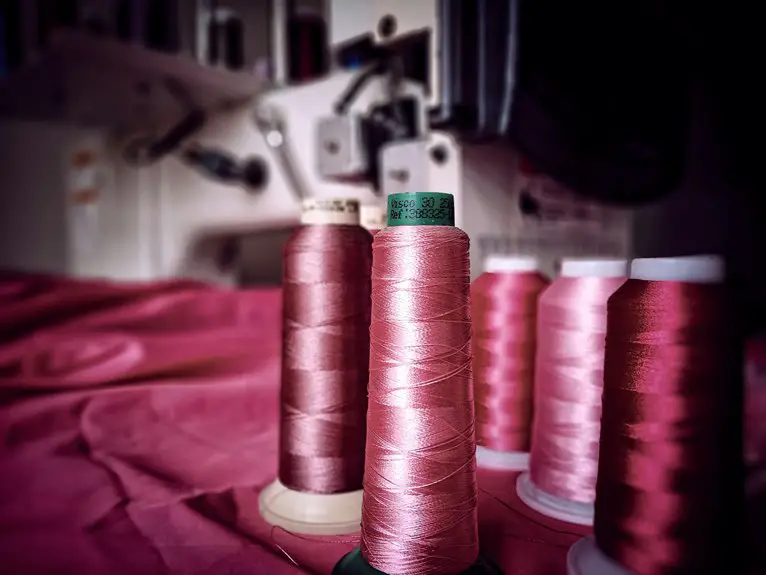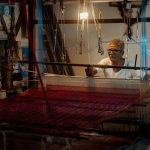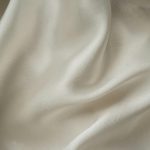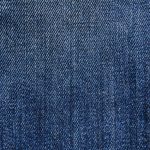To fabricate aramid fiber, you’ll start with aromatic polyamide raw materials like para-phenylenediamine and terephthaloyl chloride. You’ll polymerize these into long chains, then choose a spinning method—wet, dry, or gel—to form fibers. Next, you’ll apply heat treatment to improve strength and thermal stability. Finally, you’ll perform quality tests to guarantee durability before processing the fibers into finished products. Keep going to uncover how each step guarantees the fiber’s exceptional performance.
Table of Contents
Key Takeaways
- Begin with high-purity aromatic monomers like para-phenylenediamine and terephthaloyl chloride for polymer synthesis via controlled polycondensation.
- Use wet, dry, or gel spinning techniques to shape polymer solutions into fibers, controlling extrusion rate, temperature, and solvent removal.
- Apply heat treatment for thermal stabilization to relieve internal stresses and enhance molecular alignment and mechanical properties.
- Conduct rigorous testing including force measurement, fiber uniformity inspection, and environmental durability to ensure fiber strength and consistency.
- Complete fabrication with precision cutting, assembly, finishing treatments, and continuous quality assurance to produce final aramid fiber products.
Understanding Aramid Fiber and Its Applications
Aramid fiber is a high-strength synthetic material known for its exceptional durability and heat resistance. When you use aramid fibers, you’re choosing a material that stands up to extreme conditions without breaking down.
Aramid fiber delivers unmatched durability and heat resistance, perfect for enduring extreme conditions without failure.
You’ll find it in bulletproof vests, protective gloves, and aerospace components because it offers excellent impact resistance and maintains integrity under high temperatures.
If you’re working in automotive or sporting goods, aramid fibers provide lightweight strength, improving performance and safety.
You’ll also appreciate their resistance to chemicals and abrasion, making them ideal for industrial applications.
Understanding these properties helps you select the right fiber for your project, ensuring your final product delivers reliability and longevity in demanding environments.
Raw Materials Used in Aramid Fiber Production
Creating high-performance fibers starts with selecting the right raw materials. In aramid fiber production, you primarily work with aromatic polyamides derived from monomers like para-phenylenediamine (PPD) and terephthaloyl chloride (TCl).
These compounds provide the backbone necessary for aramid’s exceptional strength and heat resistance. You’ll also need solvents such as sulfuric acid to dissolve and process these materials efficiently.
Ensuring the purity of these raw inputs is essential since impurities can weaken the fiber’s structural integrity. Additionally, you might incorporate additives to enhance certain properties, but the core raw materials remain these aromatic monomers.
Polymerization Process for Aramid Fiber Synthesis
Although the polymerization process can be complex, you’ll find it essential for transforming raw aromatic monomers into high-strength aramid fibers. You start by mixing monomers like para-phenylenediamine and terephthaloyl chloride under controlled conditions. This leads to a polycondensation reaction, producing long polymer chains with repeating amide bonds. Controlling temperature, solvent, and reaction time secures ideal molecular weight and fiber properties.
| Step | Description |
|---|---|
| 1. Monomer preparation | Purify and measure raw materials |
| 2. Mixing | Combine monomers in solvent |
| 3. Polymerization | Initiate polycondensation reaction |
| 4. Chain growth | Allow polymer chains to lengthen |
| 5. Polymer isolation | Precipitate and dry the polymer |
This structured approach guarantees the aramid polymer’s strength and durability.
Spinning Techniques for Aramid Fiber Formation
Once you’ve synthesized the polymer, the next crucial step is shaping it into fibers through various spinning techniques.
You can choose between wet spinning, dry spinning, or gel spinning, each suited for aramid polymers. In wet spinning, you extrude the polymer solution into a coagulation bath, solidifying the fibers.
Dry spinning involves evaporating the solvent as the polymer solution is extruded into warm air. Gel spinning, meanwhile, lets you form highly oriented fibers by extruding a gel-like polymer.
Your choice impacts fiber strength and uniformity. Throughout spinning, you must control parameters like extrusion rate, temperature, and solvent removal carefully.
Mastering these techniques guarantees you produce continuous, fine filaments, setting the foundation for high-performance aramid fibers.
Drawing and Orientation of Aramid Fibers
Now that you understand spinning techniques, let’s focus on drawing and orienting aramid fibers.
You’ll use mechanical drawing processes to align the fibers, boosting their strength and performance.
Mastering these methods guarantees your fibers meet the desired specifications.
Fiber Alignment Techniques
When you work with aramid fibers, aligning them correctly is essential to maximize their strength and performance. To achieve this, you focus on controlling the fiber’s molecular orientation during fabrication.
You start by stretching or tensioning the fibers to encourage polymer chains to line up parallel to the fiber axis. This alignment directly impacts tensile strength and stiffness. You can use techniques like tension application during spinning or controlled winding to guarantee uniform alignment.
Proper fiber alignment also improves thermal stability and resistance to impact. Keep in mind that uneven alignment can cause weak spots and reduce overall durability.
Mechanical Drawing Processes
A essential step in aramid fiber fabrication is the mechanical drawing process, which enhances fiber strength by stretching and orienting the polymer chains.
When you draw the fibers, you apply tension that aligns the molecular chains along the fiber axis. This alignment boosts tensile strength and improves thermal stability.
You’ll typically pass the fibers through a series of rollers that move at increasing speeds, gradually elongating them.
Controlling the draw ratio—the extent to which you stretch the fibers—is critical; too much can cause breakage, while too little won’t fully optimize strength.
As you draw, the fibers become thinner and more uniform, preparing them for subsequent processing.
Heat Treatment and Thermal Stabilization
Although aramid fibers possess inherent strength, you’ll need to apply heat treatment and thermal stabilization to enhance their durability and performance.
This process involves carefully heating the fibers under controlled conditions to relieve internal stresses and improve molecular alignment. You’ll typically raise the temperature gradually to avoid damaging the fiber’s structure, maintaining it long enough to achieve thermal stability.
This step increases resistance to thermal degradation and improves mechanical properties like tensile strength and flexibility. Pay close attention to temperature ranges and duration, as overheating can weaken fibers.
Proper thermal stabilization also reduces shrinkage during later processing, ensuring dimensional stability. By mastering heat treatment, you’re optimizing the fiber’s performance for demanding applications, setting a solid foundation before moving on to surface treatment and coating steps.
Surface Treatment and Coating Applications
After properly stabilizing your aramid fibers through heat treatment, enhancing their surface properties becomes the next priority.
You’ll want to improve adhesion and compatibility with matrices by applying surface treatments like plasma or chemical etching. These methods increase surface roughness and introduce reactive groups, boosting bonding strength.
Next, consider coating your fibers with protective layers such as epoxy or polyurethane. These coatings shield fibers from moisture, abrasion, and UV damage while preserving mechanical integrity.
Use uniform application techniques like dip coating or spray coating to guarantee even coverage.
Quality Control and Testing Procedures
You’ll want to start by evaluating tensile strength to guarantee your fibers meet performance standards.
Then, inspect fiber uniformity to catch any inconsistencies that could affect quality.
Finally, test environmental durability to confirm your aramid fibers can withstand real-world conditions.
Tensile Strength Assessment
When you assess tensile strength during quality control, you confirm the aramid fiber meets performance standards critical for its applications. You begin by preparing standardized fiber samples, then use a tensile tester to measure force until the fiber breaks. Recording the maximum load and elongation helps you determine strength and elasticity. Consistent testing guarantees fibers perform reliably under stress.
| Sample ID | Max Load (N) | Elongation (%) |
|---|---|---|
| A1 | 3200 | 3.2 |
| B2 | 3150 | 3.0 |
| C3 | 3250 | 3.1 |
| D4 | 3180 | 3.3 |
Fiber Uniformity Inspection
Measuring tensile strength gives you valuable data on fiber performance, but guaranteeing fiber uniformity is equally important for consistent quality.
To inspect fiber uniformity, you should examine diameter consistency along the fiber length using microscopic or laser-based measurement tools. Variations can cause weak spots, affecting the final fabric’s reliability.
You’ll also want to check for surface defects like irregularities or contamination that might impact processing. Employ automated scanning systems to quickly identify inconsistencies and flag problem areas.
Environmental Durability Testing
Although initial fiber quality is essential, testing aramid fibers for environmental durability guarantees they withstand real-world conditions over time.
You’ll expose samples to UV light, moisture, temperature fluctuations, and chemical agents to simulate harsh environments. These tests reveal how fibers resist degradation, color fading, and strength loss.
By regularly conducting environmental durability tests, you catch weaknesses before production scales up, securing consistent performance. Use accelerated aging chambers and weathering equipment to replicate years of exposure in days or weeks.
After testing, analyze tensile strength, elongation, and surface changes to assess fiber integrity. This step helps you refine fabrication processes and select protective coatings if needed.
Ultimately, environmental durability testing secures your aramid fibers remain reliable and effective throughout their lifecycle.
Final Processing and Fabrication Into Products
As you move into the final processing stage, you’ll transform aramid fiber fabrics into finished products that meet specific performance and design requirements.
This phase demands precision and adherence to quality standards to guarantee the fabric’s exceptional properties are fully utilized.
Here’s how you proceed:
- Cutting and Shaping: Use specialized tools to cut the fabric accurately according to product templates or patterns, maintaining fiber integrity.
- Assembly and Bonding: Join fabric pieces using high-strength adhesives, sewing, or thermal bonding techniques, ensuring durability and flexibility.
- Finishing Treatments: Apply coatings or laminates to enhance water resistance, UV stability, or flame retardancy based on the product’s intended use.
Frequently Asked Questions
What Safety Precautions Are Necessary When Handling Aramid Fibers?
Handling aramid fibers feels like walking on a thread of glass—you’ve got to wear gloves, a mask, and goggles to protect your skin, lungs, and eyes from irritation. Always work in a well-ventilated area to stay safe.
How Do Environmental Factors Affect Aramid Fiber Durability?
You’ll find that exposure to UV light, moisture, and extreme temperatures can weaken aramid fibers over time. Protect them from harsh environments to maintain durability and performance in your applications.
What Are the Common Challenges in Scaling up Aramid Fiber Production?
Scaling up aramid fiber production presents persistent problems: pricey processes, precise polymerization, and prolonged processing periods. You’ll face equipment expenses, quality control challenges, and supply chain snags, so stay sharp and streamline steps for success.
Can Aramid Fibers Be Recycled or Reused Effectively?
You can recycle aramid fibers, but it’s tricky due to their chemical resistance and strength. Reusing them often involves downcycling into lower-grade materials, so while possible, effective recycling requires specialized processes and isn’t widespread yet.
How Does Aramid Fiber Compare Cost-Wise to Other High-Performance Fibers?
Imagine a sturdy bridge—aramid fibers cost more upfront than some high-performance fibers but offer unmatched strength and durability. You’ll find the investment worthwhile when performance and safety can’t be compromised, balancing price with premium benefits.
- Aramid Fiber Fabrication: A Step-by-Step Guide - June 22, 2025
- Aramid Felt Fabric: Properties and Industrial Uses - June 22, 2025
- Understanding the Aramid Fabric Market in China - June 22, 2025






